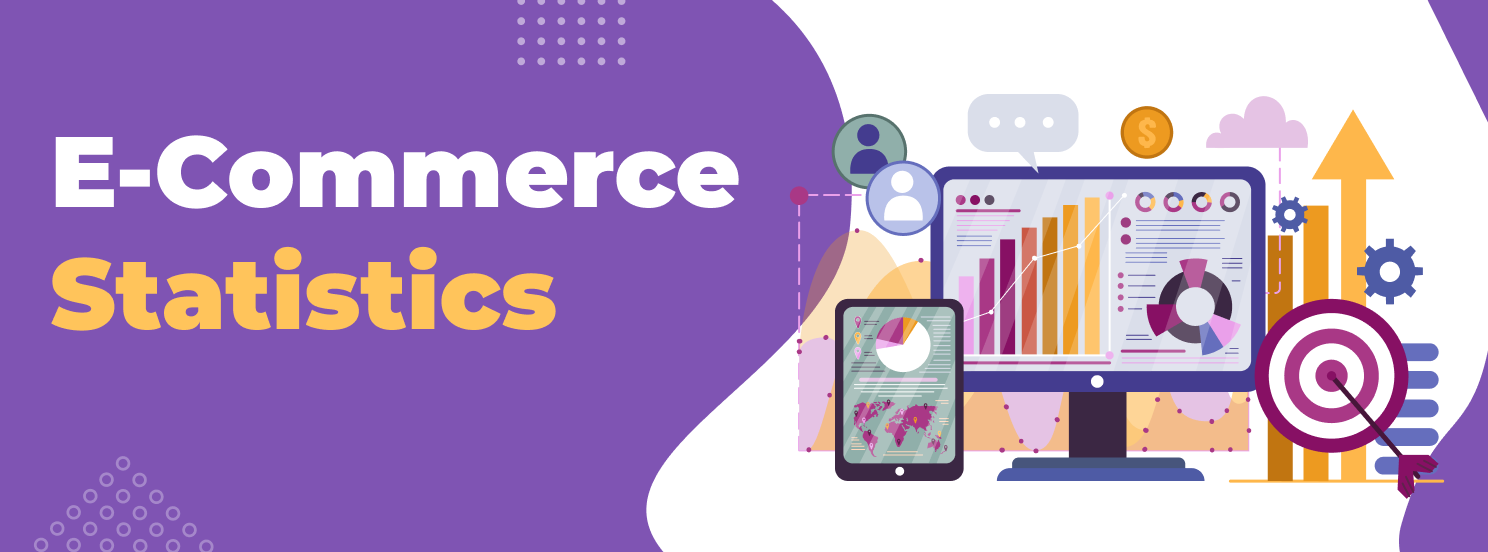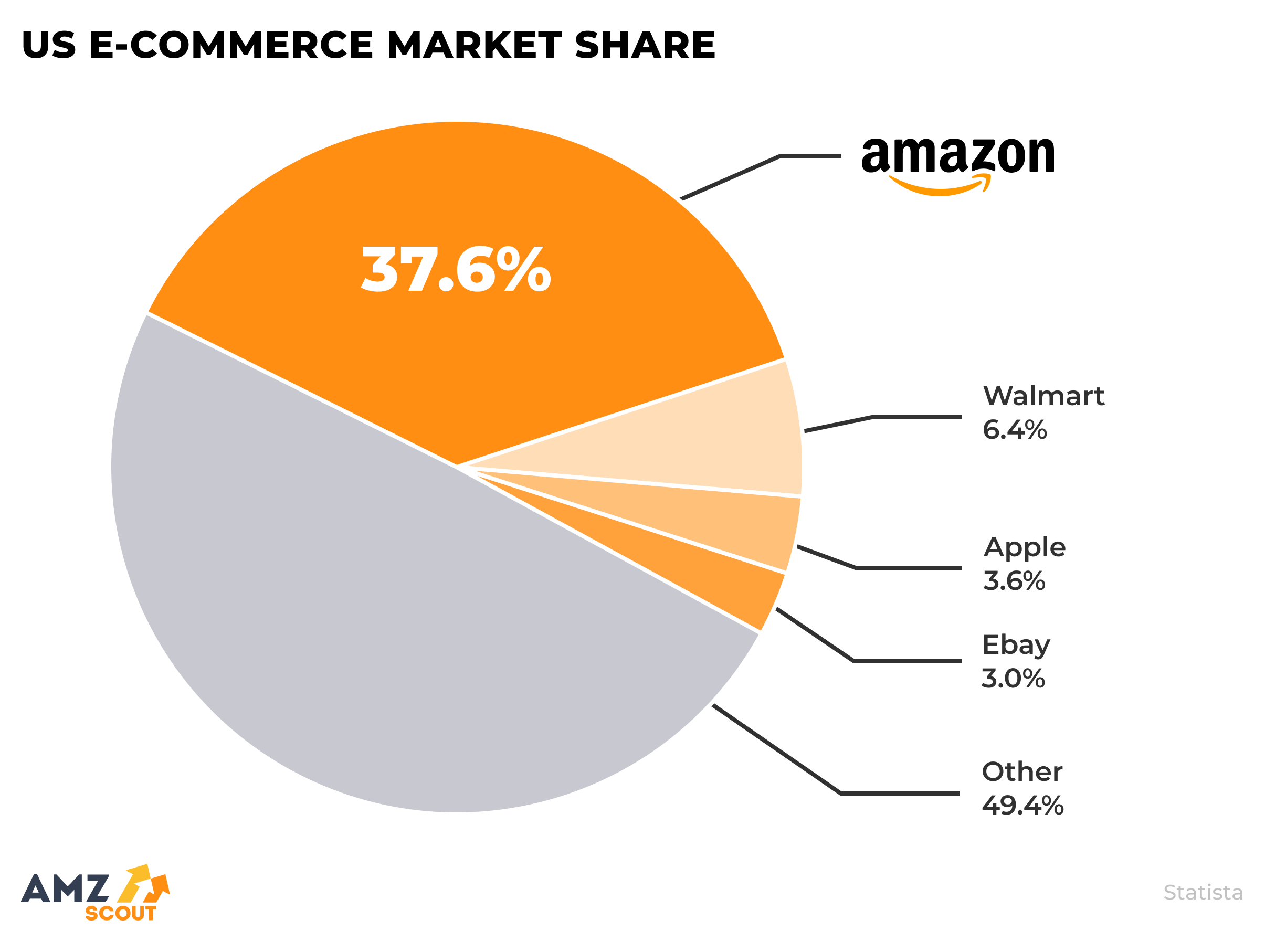
ECommerce Statistics - 2025 Updates
Over the last few years, eCommerce has become a profitable path for both new and existing businesses. As technology evolves and people's shopping habits change, it's important to understand how online selling works. This article explores important facts and trends in the online shopping world and highlights various eCommerce stats. Let’s explore why investing in eCommerce can be a lucrative decision for 2025.
Table of contents
ECommerce Business in 2025 - Is it worth it?
The eCommerce sector has shown remarkable resilience and growth over the last several years, reaching new heights in sales and expanding its share in the retail market. Here's a closer look at this dynamic evolution of eCommerce trends:
In 2023, global retail eCommerce sales hit an estimated $5.8 trillion. Forecasts suggest that we can anticipate a 39% increase in this number in the next few years, with projections to exceed $8 trillion by 2027.
ECommerce market share grows steadily despite global crises in recent years. Despite pandemic-related obstacles, ecom sales still surged by 27.6% in 2020, highlighting the sector's adaptability and consumer reliance on digital shopping.
The number of online shoppers surpassed 2.64 billion in 2023. This number highlights a significant digital consumer base, which is expected to keep growing each year.
Revenues from online sales hit $5.7 trillion in 2022, and $6.5 trillion in 2023. This increase in profits from all of the products sold online is not stopping anytime soon, and continues to soaring in today's market.
The eCommerce sector is expected to claim 20.8% of the total retail market by 2024. This reflects its growing significance and influence within the broader retail industry.
ECommerce sales are estimated to break $8.1 trillion in 2026. The ongoing expansion and potential of the digital retail landscape is going to grow even more.
Sources: Statista, Startupbonsai, Manaferra, Exploding Topics, Artios
Global ECommerce Landscape
This section outlines the details of market leadership, growth trends, and consumer shopping habits that have shaped the eCommerce sector worldwide in 2023.
Both China and the USA are world revenue leaders: With revenue of $935.14 billion, China led the global eCommerce market in 2023. The US closely followed China with $910.39 billion.
India and Philippines are growing: Philippines are predicted to show growth of online sales of 24.1% in 2024. India, with a 22.3% increase in online sales, is estimated to be not only among the fastest-growing markets, but also to reach $118.9 billion in eCommerce sales.
The USA is the leader when it comes to the frequency of online shopping: The United States holds the top spot globally for online shopping frequency, as 41% percent of Americans shop online at least once/week.
UK’s online shopping popularity: In the United Kingdom, 27% of consumers engage in online shopping at least once/week.
Frequency of online shopping in other countries: Consumers in Mexico, Canada, and Australia each have a consistent 22% population of people who shop online weekly.
Cross-border eCommerce is expanding: Cross-border eCommerce is forecasted to be on the rise, particularly in the US, China, and Europe, with projections showing an expected 107% increase by 2028.
Projected cross-border revenue is going to grow: In 2024, cross-border eCommerce is expected to reach $1.9 trillion. In 2028, it is believed that this number will jump to $3.37 trillion.
Source: Statista, Artios, Exploding Topics
ECommerce Platforms
In this section, we’ll delve into the landscape of global eCommerce platforms, highlighting key players and their growth. These platforms are used for site building, digital marketing, and search optimization. These numbers showcase the industry's most promising prospects and trends.
Shopify: Shopify, a popular platform for building online shopping websites, commands a significant 26.2% of the eCommerce platform market share. It’s a leading choice among internet retailers who want to build their own independent eCommerce stores.
Top 10 eCommerce giants: The top 10 eCommerce firms from the US, China, Argentina, and Singapore control 94% of the market size, worth $2.307 trillion, with Amazon leading the list.
Source: EcommerceDB
Amazon Highlights
Now, let’s discover how Amazon leads in the US eCommerce with its significant traffic and size.
Vast traffic: Amazon attracts an impressive 3.5 billion monthly visits, standing as a top destination for online shoppers.
Dominant US market share: Amazon holds a 37.8% share in the US-based eCommerce sector.
Leading categories: The most popular categories for online shopping on Amazon include Electronics (with over 28% of Amazon buyers) and Clothing (at around 25%). Remarkably, during the July Prime Day event, products from a Home Goods category were purchased by an impressive 40% of Amazon users.
Amazon bestseller numbers: One of Amazon’s bestsellers is the Stainless Steel Water Bottle. According to the AMZScout PRO Extension, this product has sold 77,520 units in just the last month, with its revenue approaching over $2 million.
Source: Bloggingwizard
Alibaba Insights
This section underscores Alibaba's significant impact in the global eCommerce arena and its dominance in both the Chinese and global markets at large. It showcases the company's strategic positioning and influential role in shaping online commerce numbers.
Robust revenue: In 2023, Alibaba's revenue reached 868.7 billion yuan (about $126.5 billion US dollars).
The biggest category: Electronics. Alibaba is the largest global retailer and leads in Electronics, Office, Leisure, and Entertainment. This category's online sales in the US alone amassed $318 billion in revenue in 2022.
Number of orders: Annually, Alibaba processes 12.7 billion orders/year, mainly from growth-seeking companies.
Significant revenue from China: In 2021, 66% of Alibaba's revenue stemmed from its retail services in China.
Sources: Wallstreetzen, Techreport
Mobile Commerce (M-Commerce)
The shift towards mobile commerce (M-Commerce) is evident as consumers have been increasingly using their mobile devices to shop. This transition is further influenced by social media, which significantly impacts purchasing decisions, particularly in the fashion industry and accessories sector. Here are the main facts supporting this trend:
Global mobile commerce: In 2023, mobile eCommerce sales hit $2.2 trillion, making up 60% of global eCommerce transactions.
US mobile commerce growth: It is forecasted that in 2024, mobile commerce in the US will reach $534.18 billion, accounting for 40.4% of all e Commerce sales.
Amazon's mobile dominance: Amazon is recognized as the top mobile shopping app, leading the online shopping space on mobile platforms. Amazon Shopping already boasts over 500 million downloads and has garnered more than 3.5 million reviews on Google Play.
Sources: Octalsoftware, Charle
Consumer Behavior and Demographics in Online Shopping
In this section, we’re going to cover the evolving trends in online shopping, from generational shifts and delivery preferences to gender differences and the influence of social media.
Gen Z’s online dominance: Gen Z leads as the most actively involved online shopping generation, constituting 40% of the total customer base in the United States.
Demand for free delivery: 66% of consumers expect free shipping for all of their online purchases.
Men vs. women in online shopping: Men tend to engage in more online shopping on mobile devices, driving nearly as much spending online as women, while in terms of household spending, women hold sway, accounting for 80% of shopping.
Young shoppers' Innovative engagement: Younger shoppers, specifically Gen Z & Millennials, are two to three times more likely to explore new touchpoints such as social media, virtual try-ons, and online live streams for their shopping activities.
Social media's influence on purchases: Social media plays a key role in influencing purchasing decisions, with 40% of US shoppers being influenced by social media when making a purchase. Clothing and Accessories emerge as the most influential product category on social media.
The impact of eCommerce marketing emails on buying decisions: Cart abandonment emails boost sales by 4.43% across all eCommerce sectors. Meanwhile, only 50% of the top 100 eCommerce businesses send cart abandonment emails, which means businesses can expect amazing prospects if they implement this strategy.
Source: Zipdo, BusinessDIT, LinkedIn, Think with Google, Credit Karma, Iterable
Top ECommerce Fraud Statistics
Fraud is one of the main issues associated with eCommerce, and in this section, we will examine its significant impact on the industry:
Annual fraud loss: eCommerce companies face an estimated $48 billion in annual loss due to fraud.
Impact of fraudulent orders: For every $100 in fraudulent orders, businesses incur $207 in losses.
Fraud detection tools: The average eCommerce company employs five fraud detection tools.
Refund abuse: 25% of eCommerce shoppers request refunds with intentions of keeping the product.
Fraud prevention budget: 75% of eCommerce businesses intend to boost their fraud prevention budget.
Consumer fraud victimization: 43% of eCommerce consumers have experienced payment fraud.
Source: Exploding Topics
Conclusion
As you can see, the eCommerce sector can be expected to continue growing, driven by technological advancements, changing consumer preferences, and the global expansion of major platforms. Studying the most significant trends and data in the shoppers’ world, both B2B and B2C companies can craft highly effective eCommerce frameworks. This approach ensures not only the attraction of buyers but also their consistent return to preferred brands and stores.
As we move forward through 2025 and beyond, the eCommerce landscape promises exciting opportunities for innovation, expansion, and success in the digital business space.











